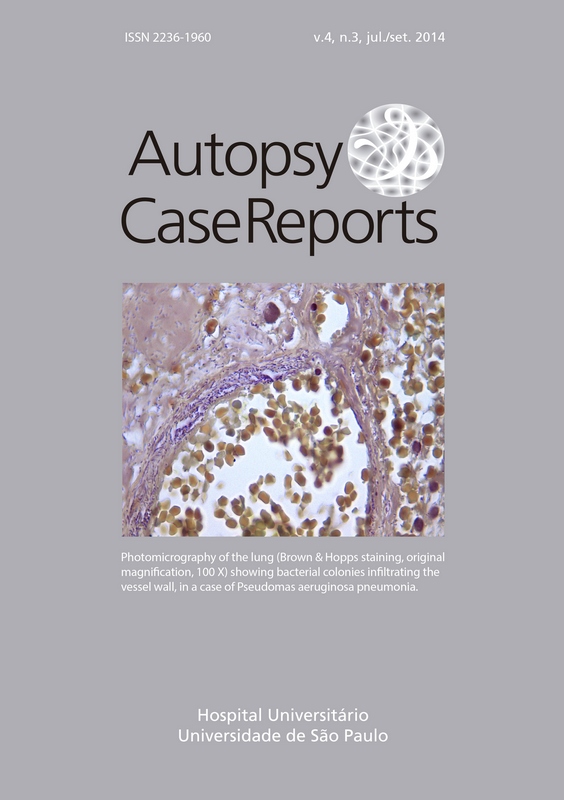Cardiac angiosarcoma: an unexpected diagnosis
Keywords:
Hemangiosarcoma, Heart Neoplasms, Incidental FindingsAbstract
Cardiac angiosarcoma is a rare entity. The incidence through autopsy findings ranges between 0.001% and 0.03%. The disease usually presents with non-specific symptoms, although asymptomatic cases are frequent; therefore, diagnosis is unexpected and consequently delayed. The authors report the case of a middle-aged man with a recent onset cough and dyspnea. He sought medical care several times without receiving a definite diagnosis until a plain chest radiography was taken showing a mediastinal enlargement, which was the reason why he was hospitalized for clinical investigation. During the diagnostic workup, an echodopplercardiogram and a thoracic computed tomography were performed, showing a heterogeneous soft-tissue mass infiltrating the pericardium and the anterior atrial wall. Multiple and scattered pulmonary nodules were also present. A pulmonary nodule was biopsied, which revealed an angiosarcoma. The clinical features added to the radiological and histological findings permitted the diagnosis of right atrial angiosarcoma. The authors highlight the unexpected pattern in the presentation of cardiac tumors.Downloads
Download data is not yet available.
Downloads
Published
2014-09-30
Issue
Section
Article / Clinical Case Report
License
Copyright
Authors of articles published by Autopsy and Case Report retain the copyright of their work without restrictions, licensing it under the Creative Commons Attribution License - CC-BY, which allows articles to be re-used and re-distributed without restriction, as long as the original work is correctly cited.
How to Cite
Crenitte, M. R. F., Galvão, M. D., Bernardi, F. D. C., & Fonseca, L. G. da. (2014). Cardiac angiosarcoma: an unexpected diagnosis. Autopsy and Case Reports, 4(3), 53-58. https://www.revistas.usp.br/autopsy/article/view/98478



